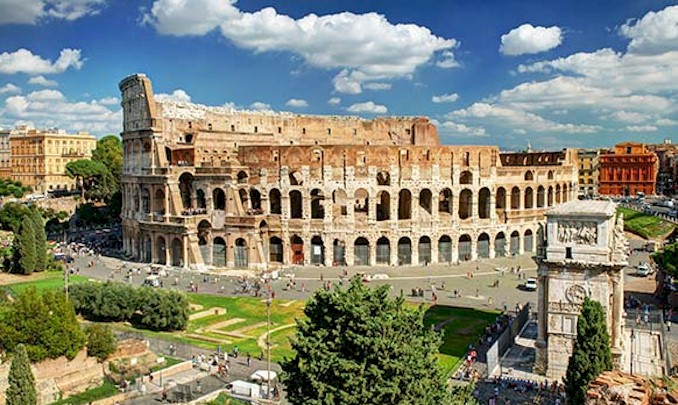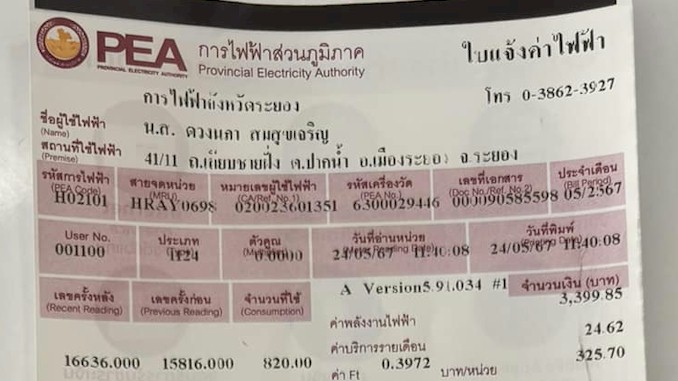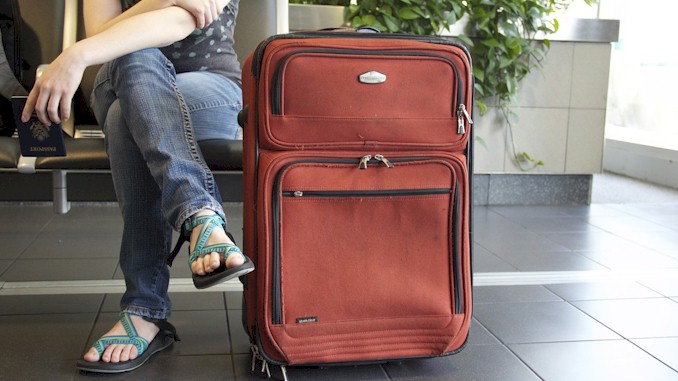Experience Rome: A Guide to the Best Times to Visit
I’ve had the opportunity to explore the city of Rome throughout different seasons, and I’m here to help you figure out the ideal time for your visit. Your experience can vary depending on the time of year, so it’s important to choose wisely. Whether you want to avoid the crowds, enjoy the sun, or immerse yourself in cultural events, I’ll share my experience and insights to help you make the most of your trip to Rome.
The best time to visit Rome is from mid-September to late October or from April to early June. During these months, the weather is mild, the crowds are fewer, and the prices are lower. However, if you’re a fan of hot weather and don’t mind the crowds, then July and August could be the best time for you. On the other hand, if you’re on a budget and want to save money on accommodation and flights, then the winter months from November to February could be a great option. Overall, the best time to visit Rome depends on your preferences and travel style.
If you’re still unsure about the best time to visit Rome, don’t worry! In the upcoming paragraphs, I’ll provide you with more detailed information about each season, including the weather, festivals, events, and other factors that could affect your trip. I’ll also give you tips on how to avoid the crowds and save money, so you can enjoy Rome to the fullest. So, keep reading to discover the best time to visit Rome based on your interests and preferences.
Understanding Rome’s Seasons: A Breakdown of Weather, Crowds, and Festivals
When it comes to visiting Rome, choosing the best time to go can be a daunting task. With its rich history, fascinating architecture, and vibrant culture, Rome is a year-round destination that attracts tourists from all over the world. However, the weather, crowds, and festivals can vary significantly depending on the time of year, making it essential to choose the best season to visit based on your preferences.
Summer (June-August)
If you’re looking for warm weather, long days, and lively outdoor activities, then summer is the best time to visit Rome. With temperatures ranging from 25-30°C (77-86°F), you can enjoy long walks, picnics in the park, and exploring the city’s outdoor landmarks. However, keep in mind that summer is peak tourist season in Rome, which means that the crowds are at their highest, and the prices for accommodation, transportation, and attractions are also at their peak. Additionally, the high temperatures and humidity can make sightseeing uncomfortable, so be sure to stay hydrated and take breaks in the shade or indoors.
Spring (April-June)
Spring is a great time to visit Rome, especially for those who want to avoid the summer crowds and enjoy milder weather. The temperatures range from 15-25°C (59-77°F), with occasional rain showers, making it perfect for outdoor activities like exploring the city’s parks and gardens. Moreover, spring is also the time when Rome celebrates Easter, which is a significant religious and cultural festival in Italy. This means that you can enjoy the city’s festive atmosphere, including processions, concerts, and fireworks.
Fall (September-November)
Similar to spring, fall is a great time to visit Rome, especially if you want to avoid the peak season crowds and enjoy cooler temperatures. The temperatures range from 15-25°C (59-77°F), with occasional rain showers, making it perfect for sightseeing and exploring the city’s landmarks. Additionally, fall is the season when Rome celebrates the famous “White Night” event, where the city’s museums, galleries, and monuments remain open all night, offering free admission and events. This is a unique opportunity to experience Rome’s cultural scene and enjoy the city’s lively atmosphere.
Winter (December-February)
If you’re looking for a quieter, more peaceful time to visit Rome, then winter is a great season to consider. While the temperatures can be chilly, ranging from 7-15°C (45-59°F), the city is less crowded, making it easier to explore its landmarks and museums without the long queues and crowds. Moreover, the winter holidays, including Christmas and New Year’s, are celebrated with great enthusiasm in Rome, with festive markets, lights, and decorations that add a touch of magic to the city.
In conclusion, understanding the different seasons in Rome can help you choose the best time to visit based on your preferences and travel style. Whether you want to enjoy warm weather, avoid the crowds, or experience the city’s festivals and events, there is a season for everyone in Rome. By taking the time to research and plan your trip accordingly, you can have an unforgettable experience in one of the most beautiful and historic cities in the world. I personally like to vist Rome in the spring.
Here is a chart about the pros and cons of visiting Rome in each season:
| Season | Pros | Cons |
| Summer | Warm weather, long days, | Can be too hot, can be too humid, crowded, Flights and accommodations more expensive |
| Spring | Mild weather, Not many crowds, Easter celebrations | Can be rainy |
| Fall | Not many crowds Mild weather | Can be rainy |
| Winter | Quiet and peaceful, winter holidays, no crowds | Very chilly |
In the next section we will go into a deeper insight into each of these seasons.
Summer: June to August
As a seasoned traveler to Rome, I can attest that the summer season is one of the busiest times to visit this vibrant city. With its warm temperatures, vibrant festivals, and longer days, it’s no wonder that Rome is a top destination for summer vacationers.
From June to August, Rome experiences its peak tourist season. The city is bustling with visitors from all over the world, so it’s best to plan ahead to avoid long lines and crowds. The city’s main attractions, including the Colosseum, the Vatican, and the Trevi Fountain, are all popular destinations, so it’s recommended to book your tickets in advance to avoid disappointment.
While the crowds can be overwhelming at times, there’s no denying the electric atmosphere that comes with the summer season. From open-air concerts in the city’s parks to outdoor cinema screenings, Rome comes alive during this time of year. The annual Estate Romana festival, which takes place from June to September, offers a wealth of cultural events, including art exhibitions, theatrical performances, and music concerts.
One of the best things about visiting Rome during the summer is the warm weather. With average temperatures ranging from the mid-70s to low 80s, it’s the perfect time to explore the city’s outdoor attractions, such as the gardens of Villa Borghese or the Roman Forum. The summer season also offers the chance to take a refreshing dip in one of the city’s many fountains, such as the iconic Fontana di Trevi.
While the summer season can be hot, it’s also the perfect time to indulge in the city’s famous gelato. Rome is home to some of the best gelaterias in the world, and there’s nothing quite like enjoying a scoop of gelato while strolling through the city’s picturesque streets.
Of course, with the summer season comes higher prices for flights and accommodations. It’s important to plan ahead and book your travel arrangements well in advance to avoid paying premium prices. That said, if you’re willing to splurge, there’s no better time to enjoy the luxurious side of Rome than during the summer season.
Overall, while the summer season can be crowded and pricey, it’s an unforgettable time to visit Rome. With its warm weather, cultural events, and electric atmosphere, it’s the perfect time to experience the city at its best. As a seasoned traveler to Rome, I highly recommend planning a trip during this time of year to make the most of your experience.
Spring: March to May
As someone who has visited Rome numerous times during the spring season, I can confidently say that it’s one of the best times to experience the city’s beauty and charm. From March to May, Rome is alive with blooming flowers, mild temperatures, and a host of cultural events, making it an ideal time to visit.
One of the biggest advantages of visiting Rome during the spring season is the mild weather. With average temperatures ranging from the mid-50s to mid-60s, it’s the perfect time to explore the city’s outdoor attractions, such as the Piazza Navona, the Spanish Steps, or the Villa Doria Pamphili. The mild temperatures also make it an ideal time for outdoor activities like picnicking in the parks, cycling around the city, or taking a leisurely stroll along the Tiber River.
Spring is also the time when Rome comes alive with vibrant colors and fragrant blooms. The city’s gardens and parks are filled with cherry blossoms, azaleas, and tulips, making it a photographer’s paradise. One of the best places to see the blooms is the Garden of Ninfa, a 90-minute drive from Rome, which is famous for its extensive collection of flowering plants and trees.
Another advantage of visiting Rome during the spring season is that it’s a quieter time for tourism compared to the summer months. The lines at popular attractions like the Colosseum and the Vatican Museums are shorter, and you can take your time exploring the sites without feeling rushed or overwhelmed. Plus, with fewer crowds, you can have a more authentic experience by mingling with the locals and visiting off-the-beaten-path neighborhoods.
Spring is also the time when Rome celebrates Easter, which is one of the most important holidays in the city. The week leading up to Easter is filled with religious processions, colorful parades, and traditional food markets. The most famous event is the Pope’s Easter Mass in St. Peter’s Square, which attracts thousands of visitors from around the world.
In addition to Easter, Rome hosts a number of other cultural events during the spring season. The International Film Festival, which takes place in April, attracts a host of international celebrities and showcases the best in Italian cinema. The Rome Marathon, held in March, is also a popular event, with thousands of runners taking to the streets to compete in the 26.2-mile race.
Finally, visiting Rome during the spring season can be more affordable than during the peak summer months. Flights and accommodations tend to be cheaper, making it a great time to plan a budget-friendly trip. Additionally, many of the city’s restaurants and cafes offer seasonal menus featuring fresh, locally-sourced ingredients, making it a perfect time to indulge in some of the city’s culinary delights.
In conclusion, visiting Rome during the spring season is an unforgettable experience. From the mild weather and blooming flowers to the cultural events and authentic experiences, there’s no shortage of things to see and do. As a seasoned traveler to Rome, I highly recommend planning a trip during this time of year to make the most of your experience.
Winter: December to February
As someone who has visited Rome numerous times during the winter season, I can confidently say that it’s an underrated time to experience the city’s beauty and charm. From December to February, Rome takes on a unique and magical atmosphere, making it an ideal time to visit.
One of the biggest advantages of visiting Rome during the winter season is the festive atmosphere. With Christmas and New Year’s Eve celebrations, the city is decked out in colorful lights and decorations. The famous Christmas markets in Piazza Navona and Campo de’ Fiori are must-visit attractions, with vendors selling everything from handmade crafts to traditional Italian sweets.
Winter is also the time when Rome’s museums and galleries come alive. The Vatican Museums and the Colosseum are less crowded, allowing visitors to take their time exploring the sites without feeling rushed or overwhelmed. Additionally, winter is the time when many of Rome’s cultural institutions host special exhibitions and events, making it a great time to experience the city’s art and history.
Another advantage of visiting Rome during the winter season is the mild weather. While temperatures can dip into the 40s, it’s still a comfortable time to explore the city’s outdoor attractions, such as the Piazza del Popolo or the Roman Forum. With fewer crowds, you can take your time and appreciate the city’s stunning architecture and historic landmarks.
Winter is also the time when Rome’s culinary scene shines. With the cooler weather, restaurants and cafes offer hearty, comforting dishes like pasta e fagioli (pasta and bean soup) and cacio e pepe (pasta with cheese and pepper). And of course, winter is the perfect time to indulge in some of Italy’s famous gelato, which is less popular during the colder months, making it easier to find and enjoy.
In addition to Christmas and New Year’s Eve celebrations, Rome hosts a number of other winter events. The annual Epiphany parade on January 6th is a colorful and festive celebration, with floats, music, and a procession of the Three Wise Men. The Carnevale di Roma, held in February, is a lively street festival with music, dancing, and colorful costumes.
Finally, visiting Rome during the winter season can be more affordable than during the peak summer months. Flights and accommodations tend to be cheaper, making it a great time to plan a budget-friendly trip. Additionally, with fewer crowds, you can take advantage of discounts and special deals offered by attractions and tour operators.
Visiting Rome during the winter season is a unique and memorable experience. From the festive atmosphere and culinary delights to the cultural events and fewer crowds, there’s no shortage of things to see and do. As a seasoned traveler to Rome, I highly recommend planning a trip during this time of year to make the most of your experience.
Fall: September to November
As a seasoned traveler to Rome, I can confidently say that fall is one of the best times to visit this beautiful city. From September to November, Rome’s weather is mild and comfortable, and the city is less crowded, making it the perfect time to explore its many attractions and hidden gems.
One of the biggest advantages of visiting Rome during the fall season is the comfortable weather. The summer heat has passed, and the cooler temperatures are perfect for outdoor activities like walking tours or visiting the city’s many parks and gardens. The colors of fall add a stunning backdrop to Rome’s iconic landmarks, making for incredible photo opportunities.
The fall season is also an excellent time to explore Rome’s culinary scene. Autumn is the harvest season, and restaurants and cafes feature dishes made with seasonal ingredients like mushrooms, truffles, and chestnuts. It’s also the perfect time to try a new wine or sample some of the local cheeses.
Another advantage of visiting Rome in the fall is the city’s cultural events. From music festivals to art exhibitions, there’s always something happening in Rome. The annual Rome Film Festival takes place in October and attracts visitors from around the world. Additionally, the Rome Jazz Festival is held in November and features a lineup of international musicians.
Fall is also the time when Rome’s historic landmarks are less crowded, allowing visitors to explore them at their own pace. The Colosseum, the Roman Forum, and the Vatican Museums are all less busy, meaning shorter wait times and fewer crowds. This also allows visitors to appreciate the architecture and history of these iconic landmarks in a more relaxed and enjoyable way.
The fall season is also the perfect time to experience Rome’s beautiful parks and gardens. Villa Borghese is a stunning park in the heart of the city, featuring fountains, sculptures, and walking paths. The Giardino degli Aranci, or Orange Garden, offers panoramic views of Rome’s skyline and is the perfect place to catch a sunset. The Appian Way is also an excellent place to explore Rome’s countryside, with its many walking and cycling trails.
Finally, visiting Rome during the fall season can be more affordable than during the peak summer months. Flights and accommodations tend to be cheaper, and many attractions and tour operators offer discounts during the off-season. This makes it an ideal time for budget-conscious travelers to plan a trip to this amazing city.
In conclusion, fall is an excellent time to visit Rome. With its comfortable weather, culinary delights, cultural events, and fewer crowds, there’s no shortage of things to see and do. As a seasoned traveler to Rome, I highly recommend planning a trip during this time of year to experience the best that this beautiful city has to offer.
Best Time to Visit Rome for Sightseeing: Enjoying the Sights without the Crowds

Rome is one of the most visited cities in the world, and its historical and cultural significance attracts millions of tourists each year. As a result, the city can become quite crowded, especially during peak tourist seasons. However, there are still ways to enjoy the sights of Rome without having to deal with the crowds. In this section, we’ll explore the best time to visit Rome for sightseeing, and how to plan your trip accordingly.
The best time to visit Rome for sightseeing is during the shoulder seasons, which are the periods just before and after the peak tourist season. These seasons fall between March to May and September to November. During these times, the weather is pleasant, and the crowds are significantly less. You can explore the sights at your own pace, without feeling rushed or overwhelmed by the sheer number of tourists.
If you want to avoid the crowds altogether, visiting Rome during the winter months can be a good option. While the weather can be chilly, you’ll have the opportunity to explore the city’s famous landmarks without the hordes of tourists. Additionally, many of Rome’s popular attractions, such as the Colosseum and Vatican City, offer extended opening hours during the winter months, giving you more time to explore.
If you’re planning to visit Rome during the peak tourist season, which falls between June and August, it’s important to plan your sightseeing accordingly. Start your day early, before the crowds arrive, and prioritize the must-see attractions. Consider booking skip-the-line tickets, which can save you time and help you avoid long queues.
Another great way to avoid the crowds is to explore the less popular neighborhoods of Rome. While the city center can be quite crowded, areas such as Trastevere and Testaccio offer a more authentic experience of Rome, with their narrow streets, local markets, and quaint cafes.
The best time to visit Rome for sightseeing is during the shoulder seasons, which are the periods just before and after the peak tourist season. If you’re planning to visit during the peak tourist season, it’s important to plan your sightseeing accordingly and consider exploring the less popular neighborhoods. With these tips in mind, you’ll be able to enjoy the sights of Rome without the crowds and make the most of your trip.
Top Events and Festivals in Rome: What to Expect Throughout the Year
Rome is a city that celebrates its rich history and culture, and there’s no shortage of events and festivals throughout the year. From religious processions to cultural celebrations, there’s always something happening in the Eternal City. In this section, we’ll explore some of the top events and festivals in Rome, and what you can expect throughout the year.
One of the most significant events in Rome is Holy Week, which takes place in the lead-up to Easter. This weeklong celebration includes processions, church services, and reenactments of the Passion of Christ. The most notable event during Holy Week is the Pope’s Mass on Easter Sunday, which takes place in St. Peter’s Square and draws huge crowds.
Another important religious festival in Rome is the Feast of the Assumption, which takes place on August 15th. This celebration marks the day when the Virgin Mary ascended into heaven and is one of the most significant events in the Catholic calendar. During the festival, there are processions, church services, and fireworks displays.
If you’re looking for a cultural celebration, Rome’s annual Carnival is a must-see. The festival takes place in February and includes parades, street performances, and traditional food stalls. The highlight of the festival is the Grand Parade, which takes place on the last Sunday before Lent.
For music lovers, Rome’s Estate Romana festival is not to be missed. The festival takes place during the summer months and features a range of music events, from classical concerts to jazz performances. Many of the concerts take place in historic venues, such as the Baths of Caracalla and the Teatro dell’Opera.
Finally, if you’re a fan of cinema, Rome’s Film Festival is a must-attend event. The festival takes place in October and attracts some of the biggest names in the film industry. In addition to screenings of new films, there are also workshops, masterclasses, and events for film buffs.
Rome is a city that celebrates its rich history and culture through a range of events and festivals throughout the year. Whether you’re interested in religious celebrations, cultural events, or music and film festivals, there’s always something happening in the Eternal City. By planning your visit around one of these events, you can experience the unique atmosphere of Rome and make the most of your trip.
How to Save Money on Your Rome Trip: Budget-Friendly Tips and Tricks
Rome is a city filled with history, culture, and incredible food, but it can also be an expensive destination for travelers. However, with a bit of planning and some budget-friendly tips, you can enjoy all that Rome has to offer without breaking the bank.
- Plan Ahead and Look for Deals: One of the best ways to save money on your Rome trip is to plan ahead and take advantage of deals and discounts. Booking your flights and accommodations early can help you get the best prices, and many museums and attractions offer discounted tickets for students, seniors, or visitors who book online.
- Explore Rome on Foot: Rome is a walkable city, and exploring on foot is not only a great way to save money but also to discover hidden gems that you might not find otherwise. Take a stroll through the charming neighborhoods of Trastevere and Monti or climb the Aventine Hill for stunning views of the city.
- Use Public Transportation: While walking is a great option, you may need to use public transportation to get around Rome, especially if you plan to visit sites that are further away. The city’s metro system is easy to navigate, and tickets are relatively inexpensive.
- Eat Like a Local: Rome is known for its incredible food, but eating out at restaurants can quickly add up. To save money, try eating like a local by visiting markets and grocery stores to stock up on fresh produce, cheese, bread, and other snacks. You can also visit local trattorias for authentic and affordable meals.
- Take Advantage of Free Activities: Rome has many free activities and sights to offer, including the Pantheon, the Spanish Steps, and the Trevi Fountain. You can also visit the Vatican Museums for free on the last Sunday of every month.
- Avoid Tourist Traps: Rome is full of tourist traps, and they can be a drain on your budget. Be wary of street vendors selling overpriced souvenirs or restaurants with menus in multiple languages. Instead, opt for authentic experiences and support local businesses.
By following these budget-friendly tips and tricks, you can save money on your Rome trip and still have an amazing time exploring all that the city has to offer.
Exploring Rome Off-Season: Why Winter Travel is Worth Considering
Rome is one of the most popular destinations in Europe, and it can get extremely crowded during peak tourist season. However, visiting Rome during the off-season can be a unique and rewarding experience, especially during winter. While it may be chilly, there are plenty of reasons to consider winter travel to Rome.
Firstly, visiting Rome during the winter means you’ll have fewer crowds to contend with, allowing you to enjoy popular attractions and landmarks without the hassle of large crowds. Not only will this make your trip more relaxing, but it also means that you can take your time and fully appreciate the city’s beauty and history.
Another advantage of traveling to Rome during the winter is the lower costs. Off-season travel usually means cheaper airfare, accommodations, and attractions, helping you save money and make the most of your trip.
Additionally, Rome has plenty of winter-specific events and activities to enjoy, such as Christmas markets, ice skating rinks, and traditional holiday festivities. The city’s museums, galleries, and other indoor attractions are also a great option during the colder months, giving you the opportunity to explore the city’s culture and history without braving the elements.
Despite the cooler temperatures, Rome’s winter climate is generally mild, with temperatures ranging from 40 to 60 degrees Fahrenheit (4 to 16 degrees Celsius). This makes it a comfortable time to explore the city on foot, taking in the sights and sounds without worrying about the heat and humidity that can be a challenge during the summer months.
While Rome is undoubtedly a beautiful city to visit year-round, winter travel can offer a unique and memorable experience. Fewer crowds, lower costs, and winter-specific events and activities make it an attractive option for budget-conscious travelers and those looking for a quieter, more relaxed trip. So, pack your warm clothes and get ready to explore the Eternal City in a whole new light!
If you want to know more about visiting Rome, you can read this article about my personal experience in Rome.







